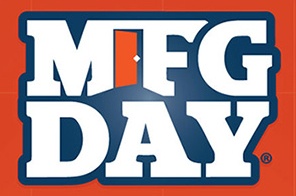Arkansas companies prep for Manufacturing Day, stress need for skilled labor
by September 28, 2017 6:25 pm 760 views

Arkansas has more than 3,000 manufacturers and many of them are in need of skilled labor to produce their products. Manufacturing Day will be held Oct. 6 across the country, and many manufacturers in the Natural State are conducting programs to let students, business, and community leaders know about job possibilities in the sector.
Andy Capel, the marketing manager for Manufacturing Solutions, an arm of the Arkansas Economic Development Commission, said there will be at least 21 separate celebrations statewide tied to Manufacturing Day.
“It’s a celebration of modern manufacturing … it gets community leaders, students, and others involved,” Capel said. “A lot of people don’t realize the opportunities they have in their own communities.”
Manufacturing jobs have significantly changed in the last several years. Robotics and automation have transformed workspaces once filled with workers putting products together on an assembly line. Computer engineers, accountants, nurses, and other professionals are in demand along with traditional vocational workers such as welders, electricians, machinists, and others, Capel said.
Makerspaces will be critical to the manufacturing growth in Arkansas, Capel said, and Arkansas is doing a good job of partnering with industries to create innovation hubs. The hubs allow entrepreneurs and business-minded people to build and create products that will be manufactured in the future, he said. Arkansas State University opened “The Garage” a makerspace in downtown Jonesboro. The Innovation Hub is in North Little Rock. Other hubs are being planned or built around the state, Capel said.
The Innovation Hub plans to tout its newly opened micro-manufacturing lab during Manufacturer Day. Micro-manufacturing supports and grows small businesses, startups, product developers and existing industries. Micro-manufacturing uses many of the same automated tools as big industry, but on a smaller scale. CNC Mills, laser cutters, and the injection molding processes are performed by 3D Printers. It uses fewer resources more efficiently and lets users decide how much product is needed, and when it’s needed.
Other manufacturers are partnering with other institutions on Oct. 6.

Baldor Electric in Fort Smith is hosting an open house 4 to 7 p.m., Oct. 4., at its facility at 5711 RS Boreham Jr. St.
“Attendees will have the opportunity to tour the plant, visit with staff and meet a number of vendors. This will be an excellent chance to learn what manufacturing looks like in the 21st Century,” noted a press release from the Fort Smith Regional Chamber of Commerce.
There are several things happening in classrooms across the state that will be a benefit to the manufacturing sector. Gov. Asa Hutchinson has pushed for a stronger computer coding program in Arkansas’ high schools, and a greater emphasis has been placed on science, technology, engineering and mathematics (STEM).
Teachers are also learning and using kata techniques to better ready students for the workforce. The kata system was developed by Toyota. Kata is a system of individual training exercises, primarily utilized in karate and other martial arts. By using the regiment of exercises each day, martial artists are able to fine-tune their skills and identify weaknesses more efficiently. This is the core of the kata training for companies, and is supported by Manufacturing Solutions.
“We’ve made great strides in manufacturing in Arkansas, and we hope to continue it long into the future,” he said.
MANUFACTURING JOB NUMBERS
After topping out at nearly 247,300 payroll jobs in February 1995, the state’s once largest job-producing sector has lost almost 90,000 jobs.
The sector employed an estimated 158,100 in August, according to the U.S. Bureau of Labor Statistics. That was down from the 158,400 in July, but better than the 154,800 in August 2016. The sector hit a low of 152,000 jobs in July 2013 before seeing a slight rebound. July marked the first time jobs in the sector were above 158,000 since September 2011.
Over the last 25 years, the number of U.S. manufacturing jobs decreased 28%, from an average of 17.1 million in 1991 to 12.3 million in 2016. During the five-year period from 2011 to 2016, manufacturing jobs increased 4.8%, from 11.7 million to 12.3 million. Over that period, those industries with an increase in employment equal to or greater than 10% were miscellaneous nondurable goods (25.4%), transportation equipment (16.4%), wood products (13.7%), and furniture and related products (10%).
Among those manufacturing industries with a decrease in employment from 2011 to 2016, apparel had the largest decrease (12.8%) and was the only manufacturing industry with a decrease greater than 10%. Over the last 25 years, apparel had the largest decrease among all manufacturing industries with a decrease of 85%. Over that period, employment in textile mills decreased 76%.
